Can you think of one skincare component that could help you solve many skin issues like discoloration, wrinkles, acne, dryness, and redness? It sounds too good to be true. Yet, niacinamide, also known as vitamin B3, can do all that and more. The niacinamide before and after results will surprise you.
It is a gentle yet powerful active ingredient that I highly recommend to everyone.
In this article, you will find out the advantages of niacinamide, what it can do, how to add it to your beauty regimen, niacinamide before and after results, and the best products to try (no matter your skin type).
What is Niacinamide?
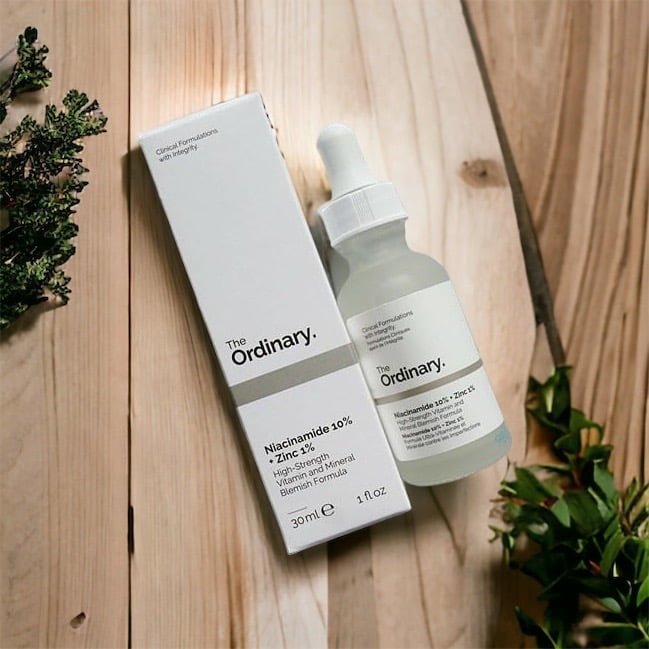
Niacinamide is a B vitamin, one of two forms of vitamin B3 that plays an imperative role in numerous cellular activities of the skin, according to Boston-based triple board-certified dermatopathologist Gretchen Frieling, MD.
We can manufacture niacinamide in our bodies when we eat foods that contain a high level of niacin, such as chicken breast, beef liver, and rice. This niacin is then converted into niacinamide in the gut and then absorbed. Afterward, it gets metabolized into the coenzyme NAD and its derivative, NADP.
For skincare products, the niacinamide used is 100% artificially made. It has several topical advantages, which we’ll talk about in a bit, along with niacinamide before and after results, although the way it works still needs to be fully understood.
Researchers think that niacinamide’s function as a precursor to the NADP family of coenzymes may be the key reason for its varied skincare advantages.
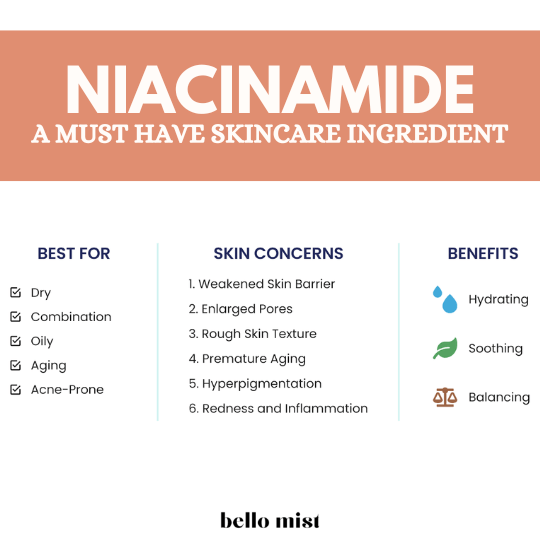
What are the skincare benefits of niacinamide?
Get ready because we’ve got a long list to cover. According to Kenneth Howe, MD, a board-certified dermatologist from UnionDerm in NYC, “Niacinamide lessens oil production, which is beneficial for both reducing and avoiding breakouts, as well as lessening shine.”
Here’s a rundown of how using niacinamide before and after can benefit your skin:
1. Fights free radicals
Niacinamide is notably known for its antioxidant properties, which can help combat free radicals responsible for signs of aging. These free radicals can be found in the environment or from the sun’s rays, depleting the natural antioxidants in our skin.
This creates an imbalance between the two, known as oxidative stress, and can harm skin cells. When applied topically, niacinamide can increase the skin’s antioxidant capacity by enhancing NAD coenzymes, which have powerful antioxidant effects.
This makes it an excellent choice for those looking for an alternative to vitamin C-based antioxidant serums, as it is more gentle on the skin and less likely to oxidize.
2. Fades pigmentation
Numerous experiments in which participants applied niacinamide to one part of their faces have decisively established that this element is effective against various pigmentation problems, including spots, patches, and melasma.
One trial showed that 5% niacinamide before and after had a substantial lightning effect after two months, and another trial found that the same concentration positively impacted dark spots after three months.
Notably, even a tiny amount of 2% niacinamide was enough to produce results: in one comparison of an SPF15 cream with and without this ingredient. This group experienced a marked decrease in hyperpigmentation within a month.
3. Reduces fine lines and wrinkles
Niacinamide before and after can reduce the appearance of fine lines and wrinkles. Niacinamide before and after studies have found that it does so by stimulating the production of collagen and other proteins in the dermis. It can help to keep collagen flexible rather than rigid.
According to Dr. Patti Farris, it may help to suppress protein glycation, which is the cause of tight, inflexible collagen and elastin molecules. By doing this, niacinamide before and after can positively impact the viscoelastic properties of the skin.
4. Clears acne
Niacinamide is an excellent option for treating acne because of its anti-inflammatory, sebum-regulating, and antimicrobial properties. Moreover, it does not cause the same side effects as prescription medications such as antibiotics and retinoids.
A niacinamide before and after study found that a 4% concentration of niacinamide produced similar results to 1% clindamycin, an antibiotic—but without the risk of antibiotic resistance.
Even more encouragingly, another niacinamide before and after study with acne sufferers showed that replacing clindamycin with 5% niacinamide gave comparable results without any adverse effects.
5. Controls excess sebum
Even if you don’t have acne, you may still battle with having an oily complexion. Fortunately, niacinamide before and after results shows that it is effective in dealing with this issue.
According to niacinamide before and after studies, a small amount of 2% niacinamide can reduce the amount of sebum secreted, and this effect was observed after two, four, and six weeks.
This is a significant contrast with many mattifying products, which work by soaking up the surplus oil with ingredients such as talc, clay, and starch.
Unlike those products, niacinamide directly addresses the underlying cause of oily skin by decreasing the quantity of oil produced and its secretion rate.
6. Reduces dryness and redness
If you’re searching for a different way to deal with dry skin, niacinamide could be the answer. Its capacity to thicken the skin’s defensive layer and enhance its performance makes it an excellent choice for keeping skin hydrated. It was also much more successful in raising hydration levels in the epidermis.
Niacinamide is a top-notch ingredient to apply to reduce redness. Its efficacy is based on its ability to elevate the skin barrier’s performance, thus decreasing the irritation caused by triggers like harsh cleansers.
The niacinamide before and after research established that 5% niacinamide could diminish red, blotchy skin after twelve weeks.
Moreover, another niacinamide before and after study suggested that a cream containing 2% niacinamide could lessen the indications of rosacea within only four weeks, with a remarkable decrease in redness.
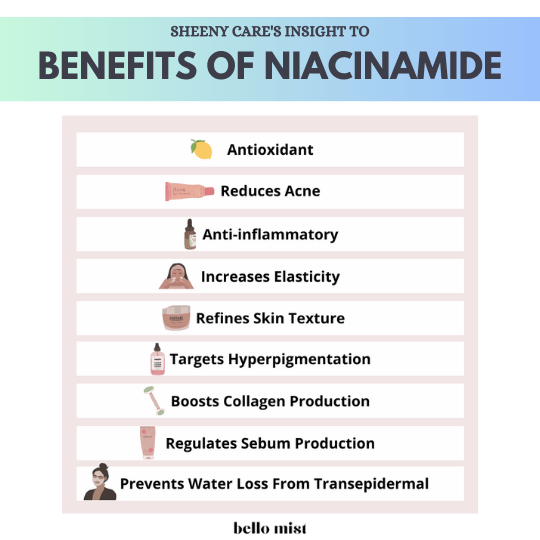
How to use niacinamide in your skincare routine?
Niacinamide is a water-soluble vitamin found in powder form and cannot dissolve in oil. For this reason, it’s typically utilized in water-based serums, as they contain higher concentrations and penetrate the skin more effectively than creams.
Not only is this ingredient perfect for those with skin that does not respond well to oil-based products, but it’s also one of the mildest and most dependable active ingredients, with a neutral pH balance.
This makes it an excellent choice for those who cannot tolerate retinoids, exfoliants, or L-ascorbic acid, and it is considered safe even for pregnant and breastfeeding women.
From my niacinamide before and after research, niacinamide is safe to use twice daily, in the morning and at night. You should apply it after cleansing and before any hydrating serum, moisturizer, or sunscreen.
What are the risks of using niacinamide?
Topical niacinamide is usually okay to use; however niacinamide before and after report shows that those with existing allergies may be more prone to a hypersensitivity reaction since niacinamide can trigger the body to produce histamine.
In some niacinamide before and after cases, especially with delicate skin, the ingredient may lead to skin irritation. Reported symptoms from niacinamide use include facial flushing, especially around the cheeks, nose, and eyes, which may manifest as redness, itching, stinging, or burning.
If these signs appear, it is best to rinse the affected area with plenty of fresh water and keep the flow going.
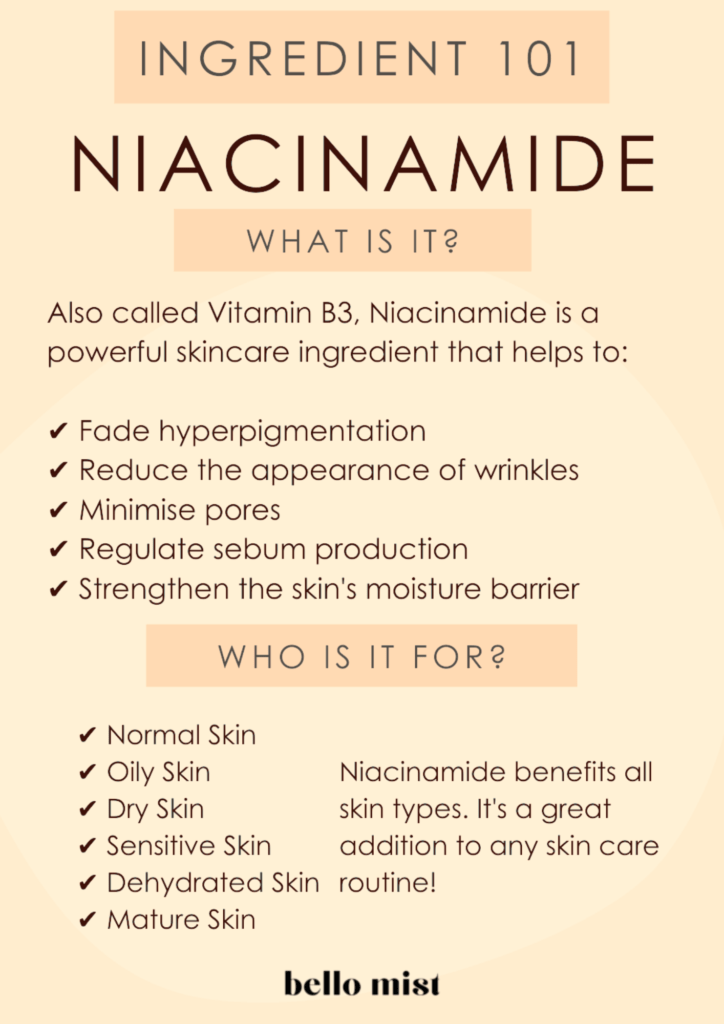
Can you use niacinamide with other skincare ingredients?
For the best outcome, niacinamide can be used with other active ingredients. Several studies have shown that adding copper, folic acid, and zinc to niacinamide can help combat acne.
Additionally, combining niacinamide with another effective ingredient, hyaluronic acid, could further enhance the effects of the serum. Let’s study the combination of niacinamide with different skincare ingredients.
1. Niacinamide with glycolic acid
Glycolic acid and niacinamide can be included in the same skincare routine but should not be applied together or mixed due to their varied pH levels. If you’d like to know more, check out my post on glycolic acid and niacinamide for tips on incorporating both into your regimen.
2. Niacinamide with salicylic acid
It’s possible to incorporate salicylic acid and niacinamide into your skincare routine. Still, unfortunately, it’s not advisable to layer or combine salicylic acid and niacinamide simultaneously due to the varying pH levels.
Check out my guide on salicylic acid and niacinamide for more information on how to use them.
3. Niacinamide with retinol
Combining niacinamide and retinol into a single skincare regimen is possible because they generally have a comparable pH level. Start with the lightest item in your routine for best results, usually the niacinamide serum.
4. Niacinamide with vitamin C
When integrating niacinamide and vitamin C into your skincare routine, you must recognize which form of vitamin C you are using.
Non-acidic derivatives, such as ascorbyl glucoside and magnesium ascorbyl phosphate, can be applied simultaneously with niacinamide as they have an identical pH.
On the other hand, acidic forms of vitamin C, such as L-ascorbic acid, should be used at different times since their pH levels differ.
5. Niacinamide with hyaluronic acid
It’s typically okay to combine hyaluronic acid and niacinamide in the same skin routine because they are formulated to be compatible in terms of pH. If you plan to layer them, apply the thinner formula first.

Niacinamide before and after skincare results
I’m here to share with you a true story that’s practically a fairy tale about skin. It’s about the product that hugely altered my skin. Niacinamide is a prevalent skincare ingredient.
It brightens, balances skin tone, reduces the look of pores, helps with dullness, calms, repairs skin, and fortifies weakened skin barriers. It also stimulates collagen production and reduces wrinkles.
The Ordinary Niacinamide 10% + Zinc 1% is a top-rated niacinamide serum, costing only $11. This is the product that made a massive difference for me. Learn more about the Ordinary Niacinamide before and after results below.
My experience after using niacinamide for 5 weeks

People rave about The Ordinary Niacinamide 10% + Zinc 1% for a reason – the ingredients. But since I have sensitive skin, I can’t just use any product, so I gradually incorporated this serum into my routine.
It has helped with my acne since it helps reduce inflammation and pairs well with the Lactic Acid serum. I don’t know if the Zinc has successfully controlled oil production, though, as my face is still quite shiny after application.
I decided to use Niacinamide 10% morning and night, as it’s an excellent choice for those with oily or sensitive skin. Yet, it doesn’t deliver the same dramatic results as Lactic Acid.
However, 5 weeks in, my breakouts are significantly less, and my skin looks much less congested. I’m thrilled with the niacinamide before and after results. From my experience, I suggest you add niacinamide to your skincare routine.
3 best niacinamide products for flawless skin
Are you trying to find out where to start? Ahead are three dermatologist-approved niacinamide products worth trying.
1. Drunk Elephant F-Balm Electrolyte Waterfacial Mask

If your complexion needs extra special attention, try replacing your usual night cream with this overnight mask. According to Dr. Howe, this deeply hydrating and calming mask contains niacinamide to provide anti-inflammatory benefits.
Check out the price on Sephora
Check out the price on Spacenk
2. SkinMedica’s Lytera 2.0 Pigment Correcting Serum

According to Dr. Howe, this powerful solution for discoloration may be a bit pricey; however, it’s definitely worth the cost. In addition to working harmoniously with tranexamic acid – a highly advanced lightning agent – niacinamide also calms and comforts the skin.
Check out the price on Skinmedica
Check out the price on Dermstore
3. La Roche-Posay Toleriane Double Repair Moisturizer
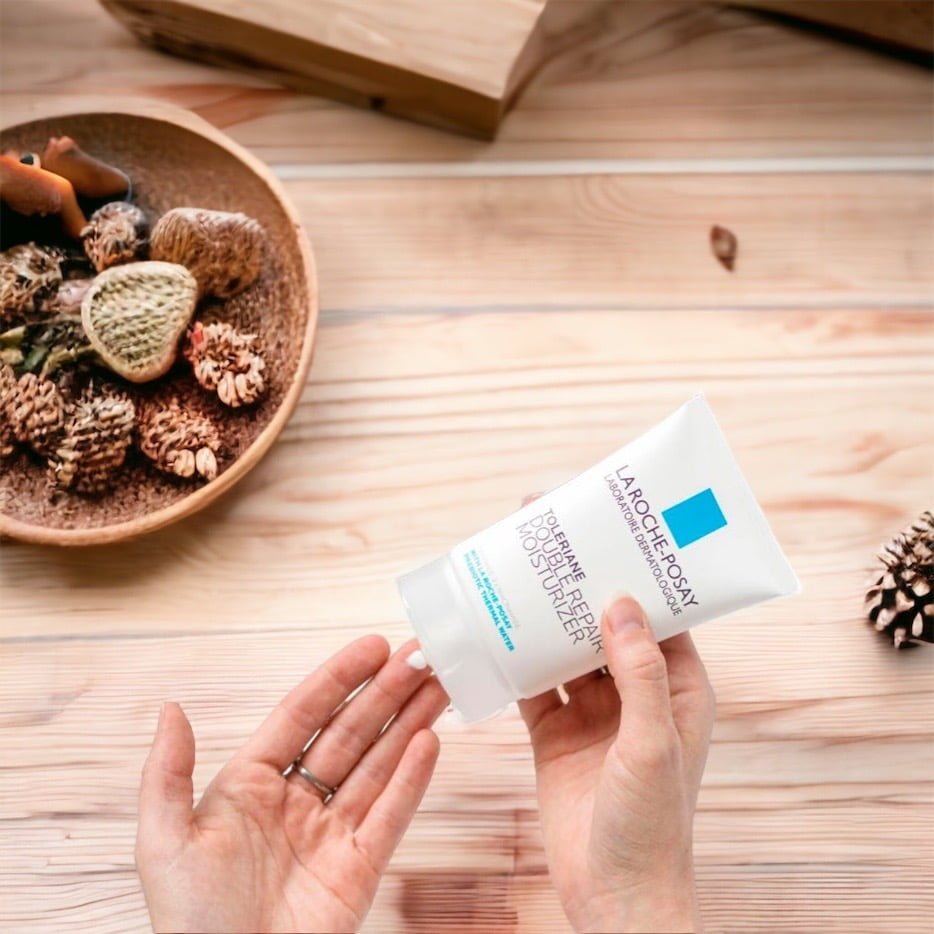
According to Dr. Frieling, this moisturizer is an excellent choice for all skin types, as it contains niacinamide which helps to nourish, strengthen, and restore the skin. It’s ideal for sensitive skin since it does not contain synthetic fragrances or preservatives that can cause irritation.
Check out the price on La Roche-Posay
Wrapping up
I’ve been using topical niacinamide for years, and it’s been a game-changer. Not only does my skin feel less greasy, but it’s also more hydrated and has a healthy flush.
After a breakout, any post-acne marks fade faster. Even during the summer, I no longer get sun spots on my cheeks.
I can’t recommend niacinamide enough; it is wallet-friendly and is excellent for targeting skin concerns. Have you tried this perfect ingredient? If yes, then do share your thoughts in the comment section.
Hopefully, this guide on niacinamide before and after results answers all your queries.
Read More
How to use Glycolic Acid and Vitamin C for flawless skin?
How to combine Glycolic Acid and Niacinamide for maximum results?
How to combine Salicylic Acid and Niacinamide for clear skin?
How to use Azelaic Acid and Vitamin C for flawless skin?
Can Hyaluronic Acid cause acne? Here’s what you need to know
Does Niacinamide cause purging or not? Uncovering the truth
Lactic Acid and Retinol: The miracle duo for flawless skin
Combining Azelaic Acid and Retinol: Benefits and how to use it safely
